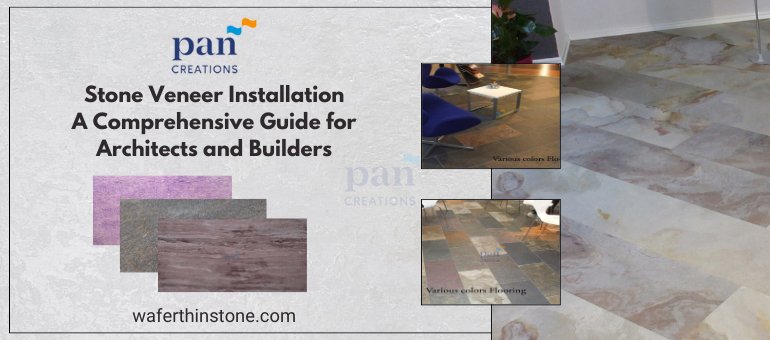How Long Does It Take to Fit a Full Set of Veneers?
Stone veneer is a popular choice for architects and builders due to its versatility, cost-effectiveness, and aesthetic appeal. Whether used for foundation facades, chimneys, statement walls, or outdoor landscaping, stone veneer offers a wide range of application possibilities. In this comprehensive guide, we will provide you with valuable tips and guidelines for the proper installation of stone veneer, ensuring that your projects go smoothly and remain within budget.
Preparing Your Surface for Stone Veneer Installation
Before starting the installation process, it is crucial to ensure that the surface you plan to apply the stone veneer on is compliant with local building codes and free of any structural issues. Proper gapping of sheathing materials, typically ⅛” at seams, should be maintained to allow for expansion and prevent cracking of the stone veneer.
For frame construction, the spacing is usually 16” on center with some form of sheathing material. In this case, it is recommended to apply two layers of Water Resistive Barrier (WRB) and install a weep screed to allow moisture to escape. The primary layer of WRB should have properties such as vapor permeability, tear resistance, water resistance, and durability. The sacrificial layer of WRB protects the primary WRB from mortar adhesion and establishes a drainage plain.
In masonry applications, a WRB or weep screed may not be required by building codes, but it is still recommended by most stone veneer manufacturers and building inspectors. However, the installation of a WRB in masonry applications would prevent direct adherence of the stone veneer to the masonry.
Must read: The Advantages of Thin Stone Veneer for Interior Design
The Principles of Water Management in Stone Veneer Installation
Proper water management is crucial for the long-term durability of stone veneer installations. There are three key principles to follow:
- Barrier system: This system stops water at the exterior face of the cladding.
- Concealed barrier system: This secondary material further drains and manages water. Typically, a WRB forms the concealed barrier.
- Rainscreen: This system uses the concealed barrier (WRB) and provides a larger physical air space between the WRB and the cladding. While not always required in all climates, the rainscreen provides an additional layer of water infiltration protection.
Lath plays a significant role in the adhered stone veneer system, similar to how framing is the skeleton of stick-built construction. It is essential to use the appropriate lath and fasteners to ensure proper installation. Expanded metal lath, woven wire lath, welded wire lath, fiberglass lath, and certain types of plastic lath are among the options available. The lath, along with its attachments, should be able to carry the weight load of the adhered stone veneer system to the framing.
Scratch Coat for Corrosion and Weather Resistance
The scratch coat serves two critical functions: minimizing water and air infiltration and providing total weather resistance for the wall. It is essential to achieve the optimal thickness of the scratch coat, typically between ½ to ¾ inch. The scratch coat should be applied with a self-furred or lath furring fastener, centered near the middle of the mortar thickness, to provide optimal crack resistance.
Achieving a Solid Bond for Your Stone Veneer
To meet building code requirements, adhered stone veneer must achieve a minimum bond strength of 50 psi. Several key principles should be followed to ensure a solid bond:
- Clean the back of the stone veneer units to remove any loose material.
- Consider weather conditions, such as dampening the back of each unit in hot and dry weather or heating the materials in cold weather.
- Use high-quality mortar that meets or exceeds the stone manufacturer’s requirements.
- Carefully mix the mortar to achieve the proper wetness, ensuring it adheres when a trowel covered with it is inverted.
- Choose the best application method for your project, whether troweling mortar onto the wall, back-buttering the stone, or using a combination of both.
The goal is to achieve a uniform layer of mortar on the wall that supplements the mortar of the scratch coat and achieves a minimum 50 psi shear bond strength. Avoid any voids within the mortar layers that could capture water, as this can lead to debonding.
Must read: The Benefits of Thin Stone Veneer
Maintaining Stone Veneer for Longevity
Proper care and maintenance are essential for preserving the beauty and function of your stone veneer for decades to come. Each manufacturer may have specific care instructions, including sealing, cleaning, de-icing, and power washing. It is crucial to follow these instructions to maintain warranty coverage and ensure long-term performance.
Conclusion
Stone veneer installation is a cost-effective and versatile option for architects and builders looking to enhance the aesthetic appeal of their projects. By following the guidelines outlined in this comprehensive guide, you can ensure a successful and durable installation of stone veneer. Remember to always comply with local building codes and consult with experts for personalized tips and techniques specific to your project.
For the best quality stone veneer products, consider Pan Creations India, the leading manufacturer and exporter of flexible stone veneer, Thin stone, Real SandStone, UV Translucent, Fabric Backing, and Mosaic from India.
Remember, proper installation is key to achieving stunning and long-lasting results with stone veneer. So, take the time to prepare the surface, follow water management principles, ensure a solid bond, and maintain your stone veneer for years of enjoyment.

